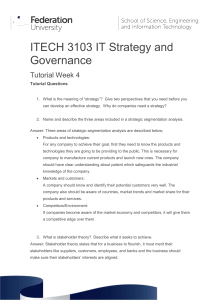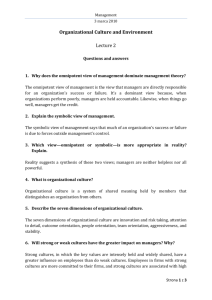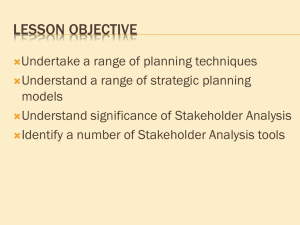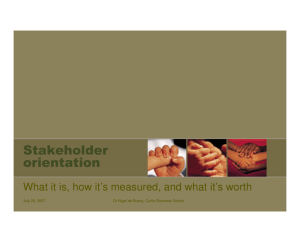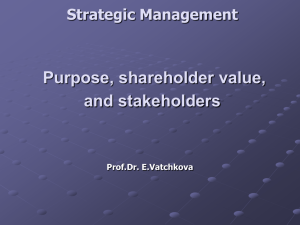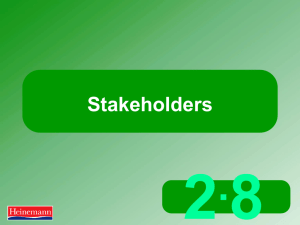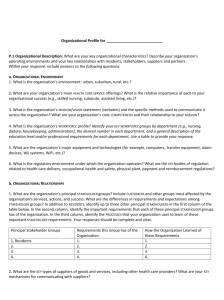Organizational Culture & Environment: Constraints
advertisement
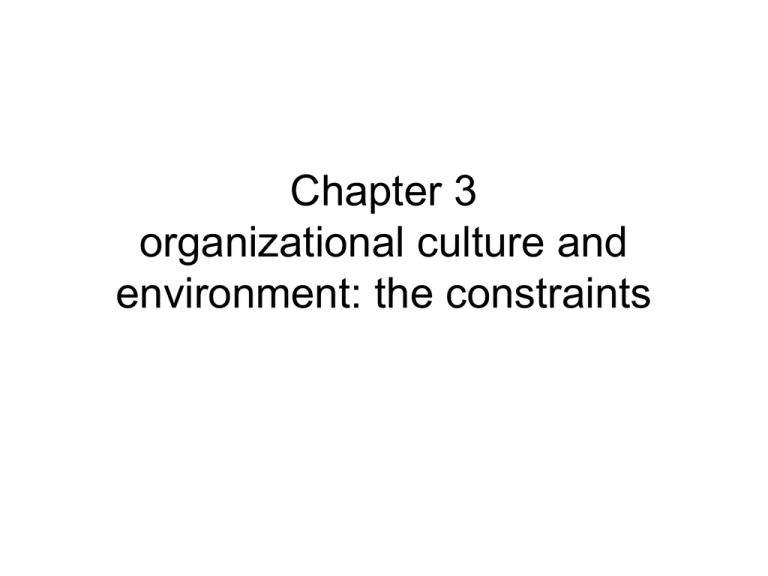
Chapter 3 organizational culture and environment: the constraints The usefulness of management • The omnipotent view – The view that managers are directly responsible for an organization’s success or failure. • The symbolic view – The view that much of an organization’s success or failure is due to external forces outside managers’ control. • Realty suggests a synthesis. The organizations’ culture • Organizational culture: the shared values, principles, traditions, and ways of doing things that influence the way organizational members act. – – – – – – – Attention to detail Outcome orientation People orientation Team orientation Aggressiveness Stability Innovation and risk taking Strong and weak culture Strong culture Weak culture Values widely shared Values limited to a few people— usually top management Culture conveys consistent messages about what’s important Culture sends contradictory messages about what’s important Most employees can tell stories about company history/heroes Employees have little knowledge of company history or heroes Employees strongly identify with culture Employees have little identification with culture Strong connection between shared values and behaviors Little connection between shared values and behaviors How about the culture in your class? In Wuhan? In China? The source of culture • Founders and history. • How an organization’s culture continues? • How employees learn culture? – Stories – Rituals – Material symbols – Language Current organizational culture issues facing managers • Creating an ethical culture • Creating an innovation culture – Challenge and involvement, trust and openness, idea time, playfulness/humor, conflict resolution, debates, risk taking • Creating a customer-responsive culture Spirituality and organizational culture • • • • • Strong sense of purpose. Focus on individual development. Trust and openness. Employee empowerment. Toleration of employee expression. environment • External environment – Those factors and forces outside the organization that affect the organization’s performance. • Internal environment – Mermber of organization – management Specific and general global economics Public pressure groups suppliers The organization demographics Political government competitors customers sociocultural technological legal Stakeholder vs. shareholder • Stakeholder – Any constituencies in the organization’s environment that are affected by the organization’s decision and actions. – Balance of stakeholder • Shareholder – Owner of the organization’s assets. – Maximiazation of shareholder interest. employees customers unions Social and political action group shareholders organization competitors suppliers governments Which one is most important? Could you give more stakeholder in China? Trade and industry associations
